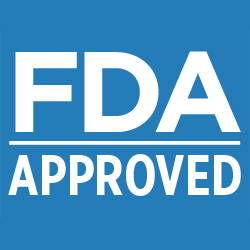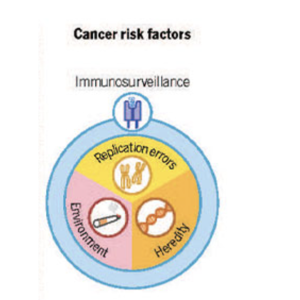Originally published by our sister publication Specialty Pharmacy Continuum
The next two years may well see an explosion of FDA approvals for non-small cell lung cancer (NSCLC), with some of the drugs being first-in-class and/or best-in-class. If even a few of these agents make it through the regulatory gauntlet, clinicians will have a powerful new set of therapeutics to combat this challenging malignancy, a pharmaceutical industry analyst predicted at the NASP 2024 Annual Meeting & Expo, in Nashville, Tenn.
The coming wave of NSCLC approvals was one of many oncology drug development trends that Ray Tancredi, RPh, MBA, CSP, the divisional vice president of Pharma Relations & Specialty Pharmacy Development at Walgreen Co., highlighted during his presentation. With the sheer numbers of NSCLC drugs that populated his slide deck, “I guess you can see a theme emerging here. And it’s an encouraging one,” Mr. Tancredi said, given the prevalence and severity of NSCLC. Lung cancer is the second most common cancer in both men and women in the United States, with nearly 235,000 new cases projected to occur in 2024, he noted. NSCLC will account for up to 85% of those cases, with a five-year survival rate of only 28% (all stages combined).
Here are some of the more promising NSCLC agents Mr. Tancredi highlighted, with details on formulation, mechanism of action, safety and efficacy, and projected market entry.
Telisotuzumab Vedotin
This IV product, marketed by AbbVie as Teliso-V, is a potential first-in-class anti-mesenchymal epithelial transition (c-MET) protein–directed antibody–drug conjugate that is designed to target c-MET overexpressing tumors, Mr. Tancredi noted. c-MET is a receptor tyrosine kinase that can be overexpressed in many solid tumors, including NSCLC.
Key safety and efficacy data on telisotuzumab vedotin were reported in the phase 2 LUMINOSITY trial (J Clin Oncol 2024;42[25]:3000- 3011). A total of 176 patients with nonsquamous epidermal growth factor receptor (EGFR) wild-type NSCLC were included, with an eye toward determining how c-MET protein overexpression affected results. The overall response rate (ORR) was 28.6%. Patients with c-MET protein overexpression (defined as =25% tumor cells with 3+ staining) fared better, with an ORR of 34.6%.
The median overall survival was 14.5 months, with a slight nod to c-MET high expressors at 14.6%. Most common any-grade treatment-related adverse events (AEs) were peripheral sensory neuropathy (30%), peripheral edema (16%) and fatigue (14%); the most common grade =3 AE was peripheral sensory neuropathy (7%).
“It’s important to note that this trial included NSCLC patients with a c-MET expression who had failed at least two previous lines of chemotherapy,” Mr. Tancredi said. “There simply are no targeted therapies currently FDA approved for that indication.”
On Sept. 27, AbbVie submitted a Biologics License Application (BLA) to the FDA for accelerated approval of telisotuzumab vedotin in adult patients with previously treated, locally advanced or metastatic EGFR wild-type, nonsquamous NSCLC with c-MET protein overexpression. The drug previously had been granted Breakthrough Therapy designation.
“We may see Teliso-V reviewed and approved by the FDA very soon,” Mr. Tancredi said. (As of late December, the drug had not yet been approved.)
Zipalertinib
This oral therapy, developed by Taiho Pharmaceutical and Cullinan Therapeutics, was engineered to inhibit EGFR in patients with exon 20 insertion mutations, while sparing wild-type EGFR. In September, Cullinan Therapeutics announced safety and efficacy data from the pivotal phase 2b REZILIENT 1 study of 30 evaluable NSCLC patients with the exon 20 mutation. Patients were treated with zipalertinib after suboptimal responses to a median of three prior systemic anticancer regimens. The results, which were released at the European Society for Medical Oncology Congress 2024 (presentation 1245MO), in Barcelona, Spain, were as follows: One patient (3%) had a complete response, 11 patients (37%) had a partial response and 15 patients (50%) had stable disease.
The most common treatment-related AEs in greater than 10% of patients (n=45) were rash (38%), paronychia (36%), anemia (24%), dry skin (20%), dermatitis acneiform (16%), nausea (16%) and stomatitis (11%), the majority of which were grade 1/2.
“Zipalertinib is a unique formulation that’s distinct from other exon 20–directed agents, and not surprisingly, it has received a breakthrough therapy designation from the FDA,” Mr. Tancredi said. “We could see this reviewed and approved by the FDA by the end of 2025.”
Datopotamab Deruxtecan
This IV drug is an anti–tumor-associated calcium signal transducer (TROP)2 monoclonal antibody–topoisomerase I inhibitor conjugate. The BLA for datopotamab deruxtecan was based on the TROPION-Lung01 study (J Clin Oncol 2024 Sep 9. doi:10.1200/JCO-24-01544). The phase 3 trial compared the efficacy and safety of the investigational drug—referred to as dato-DXd in the study—versus docetaxel in patients with pretreated advanced/metastatic NSCLC. The most pronounced difference in efficacy was seen in a nonsquamous histology subgroup, where the median progression-free survival (PFS) was 5.5 months in patients treated with dato-DXd versus 3.6 months in those given docetaxel (hazard ratio [HR], 0.63; 95% CI, 0.51-0.79). The median overall survival was 14.6 versus 12.3 months (HR, 0.84; 95% CI, 0.68-1.05).
As for safety, grade 3 treatment-related AEs occurred in 25.6% and 42.1% of patients in the dato-DXd and docetaxel groups, respectively.
The Prescription Drug User Fee Act (PDUFA) date for datopotamab deruxtecan, which was jointly developed by AstraZeneca and Daiichi Sankyo, is scheduled for the first quarter of 2025, a company press release noted. If the drug gets approved, “it would be the first TROP2-directed antibody–drug conjugate for patients with lung cancer,” Mr. Tancredi said.
Assuming all of these investigational drugs are approved by the FDA, “remember that NSCLC is often diagnosed in advanced stages, making it all the more challenging to treat,” he stressed. “So the more chemotherapeutic agents we can add into the marketplace, the more likely we can achieve better responses for our patients.”
An Oncology Pharmacist’s Perspective
Benjamin Yoder, PharmD, BCOP, a clinical pharmacy specialist in thoracic oncology at the University of Colorado (CU) Skaggs School of Pharmacy and Pharmaceutical Sciences, in Aurora, agreed that NSCLC requires a robust pipeline to stay ahead of the disease. That’s due, he noted, to the multiple driver mutations that make NSCLC such a challenging and unique cancer to treat.
To detect those driver mutations, “we get full molecular testing when NSCLC is diagnosed,” Dr. Yoder said. These tests are particularly important for patients who progress to metastatic disease, where “targeted agents give us the best bang for our buck in terms of PFS and overall survival gains versus standard chemotherapy.”
Once the screening results are posted, “we’ll note which driver mutation has been identified and offer an overview to the oncologist of which drugs targeting those mutations are available,” Dr. Yoder said. “That way, treatment starts are not delayed, which is critical, especially if that patient is presenting with a high disease burden.”
Starting—And Keeping—Patients on Therapy
Choosing the right drug for the right patient is an important first step. But ensuring the patient actually can afford the treatment is also critical, Dr. Yoder stressed (see box). Once financial barriers are addressed and a patient has begun therapy, the next challenge is to avoid treatment discontinuations by providing supportive care for NSCLC AEs.
Among the drugs used in targeted therapy, the EGFR tyrosine kinase inhibitors (TKIs) are the most common and often are associated with AEs that require close patient support to manage, he noted. These can include rash and other dermatologic reactions, diarrhea, stomatitis, interstitial lung disease and ocular toxicity (Drug Saf 2019;42[2]:181-198).
When patients develop rashes, “we recommend over-the-counter treatments such as hydrocortisone cream, or start prophylactic antibiotics such as doxycycline to help prevent that rash from even forming,” Dr. Yoder said. For diarrhea, “we counsel patients on how to take OTC loperamide. If that fails, we can escalate to prescription-strength options such as diphenoxylate and atropine.”
Another key area of support is the less common but still serious situation where a decision to delay treatment needs to be made because a lung cancer patient requires surgery. “There are several targeted agents that impair wound healing, so our oncologists often will ask us whether treatment needs to be delayed, and if so, for how long,” Dr. Yoder said.
He cited, as an example, rearranged during transfection (RET) inhibitors such as selpercatinib (Retevmo, Eli Lilly). According to selpercatinib’s prescribing information (PI), the medication should be withheld for at least seven days before surgery. The PI also states that the RET inhibitor should not be administered for at least two weeks after surgery and until adequate wound healing. “This is the type of information source that typically guides the recommendations we give to our oncologists,” Dr. Yoder said.
Not all communications in Dr. Yoder’s pharmacy team are with prescribing physicians; patients often need a conversation to ease the anxiety that comes with a new lung cancer diagnosis. “This is one of the major benefits we offer as oncology pharmacists,” he stressed. “I have every patient who starts on a new therapy, whether it’s a targeted agent, chemotherapy or immunotherapy, sit down with me and talk for a half-hour to an hour, depending on the complexity of their cancer regimen. I review what to expect, how to handle take-home medications, how to mitigate side effects and who to call if complications occur.”
Those conversations “do a lot to alleviate the anxiety these patients can have—especially when they are newly diagnosed or have just found out their disease had progressed on the last set of scans,” Dr. Yoder said. “Spending that time with patients is incredibly valuable as they’re going through their cancer journey.”
One More Pipeline Agent
As far as his own take on the NSCLC pipeline, Dr. Yoder cited patritumab deruxtecan as a particularly exciting agent. (Mr. Tancredi agreed and included it in his NSCLC overview.) The drug is a potential first-in-class HER3-directed deruxtecan antibody–drug conjugate jointly developed by Daiichi Sankyo and Merck. Details on the latest data for the drug are a bit limited, because full results from the phase 3 HERTHENA-Lung02 trial (ClinicalTrials.gov Identifier: NCT05338970) have not yet been released. But according to a joint company press release, patritumab deruxtecan demonstrated a statistically significant improvement in PFS in patients with locally advanced or metastatic EGFR-mutated NSCLC who received prior EGFR TKI treatment. (Patritumab deruxtecan was compared with standard platinum-based doublet chemotherapy.)
Approval of patritumab deruxtecan is pending after the FDA sent a June 26, 2024, letter to the developers regarding inspection of a third-party manufacturing facility. The CRL did not identify any issues with the efficacy or safety data submitted, according to a Merck press release (bit.ly/3YV4mvR)
Regulatory issues aside, “the reason why patritumab deruxtecan is so encouraging is because it’s for patients who have progressed on prior EGFR/TKI-directed therapy,” Dr. Yoder said. “That’s a big gap in care for NSCLC right now.” In most cases, “patients will just fall back to standard chemotherapy, and response rates won’t be necessarily as high as having another targeted agent. So we are really looking forward to this one hitting the market.”
The sources reported no relevant financial disclosures.






